Deflation Propaganda Campaign Claims Bryan Caplan
Bryan Caplan defends Scott Sumner (already we should suspect trouble) and remarks:
Looking at the numbers makes it hard to believe in a quick return to full employment. During the 1980-2 recession, there was high inflation. All employers had to do to get real wages down to full employment levels was (a) avoid nominal wage increases, and (b) wait. Now that we’ve actually got deflation, waiting doesn’t help. Even with a pay freeze, workers are getting more overpaid by the day. [Emphasis added.]
Bryan Bryan Bryan! The CPI started falling sharply in August 2008. But then it bottomed out in December 2008. Since then, the (non-seasonally adjusted) CPI is up 2.7% (through August 2009), which is an annualized price inflation rate of more than 4 percent.
I am really baffled by Bryan’s statement. Even the seasonally adjusted CPI is up 1.8% year-to-date (through August), which translates to an annualized rate of 2.7%. So why does Bryan imply prices are falling “by the day”? Is he looking at year/year figures and assuming past performance is indicative of the future?
(BTW if you are getting lost in all the numbers, just look at the picture of the price level. You can see how misleading the year/year figures are.)
Markets in Everything
Has anyone else noticed that MarginalRevolution has a featured ad (in the top left) that blames all of our health care woes on the insurance companies? A lot of the time, the ads have the catch phrase, “If the insurance companies win, we lose.”
Note that this doesn’t seem to be a random google ad.
I’m not sure what my point is, except that I am suspicious of all-things-Cowen. In any event, it’s strange that one of the top sites for libertarian politics and free-market economics has such featured ads.
Gold Keeps Chugging
Dang! As of 12:30pm EST, gold is up 1.17% this session. Right now the (future) contract is trading at $1056.60 / ounce.
How to Solve Chicago’s Violent Crime Problem
If you want to ruin your day, check out this article from yesterday’s WSJ on the violence plaguing some of Chicago’s schools:
The videotaped beating death of a 16-year-old boy who wandered into a street brawl is focusing attention once again on how dangerous it is to be a teenager in Chicago.
…
An image from a video of the Sept. 24 attack on Chicago’s South Side that left Derrion Albert dead. Four teenage boys have been arrested.U.S. Education Secretary Arne Duncan and U.S. Attorney General Eric Holder are expected to meet with local elected officials, students and parents Wednesday in Chicago. The trip signals that President Barack Obama’s administration may be taking a more active role in seeking solutions to a violence problem that has left 45 students dead in the past 12 months.
Derrion Albert, 16 years old, was beaten to death seven blocks from his school last month. A recording of the attack was posted online and widely viewed. Police have arrested four teenage boys in connection with the incident.
Between September 2008 and September 2009, 398 Chicago students were shot, said Monique Bond, a spokesman for the district. So far this school year, four students have been slain.
Now check this out. Look at how they analyze the problem, completely taking away any issue of personal responsibility and rendering this into something like a medical condition:
Mr. Huberman, a former police officer who was named CEO seven months ago, said the security plan was created by analyzing profiles of all the students shot over the past five years.
The most at-risk students have poor academic performance, miss more days of school and are more likely to be homeless and in special-education programs than other students, according to the report.
The analysis found that about 80% of the shootings involved students at 38 of 89 high schools in the district.
The 200 students assessed as being in the “ultra high risk” category were deemed to have greater than a 20% chance of being shot over the next two years. An additional 1,000 students had between a 7.5% and 20% chance of being shot, and an additional 8,500 had a 1% to 7.5% chance of being shot.
We all know what the “solution” is, right? Of course we do. Spend a bunch more money on things that haven’t worked in the past:
In response to the violence, Chief Executive Officer of Chicago Public Schools Ron Huberman last month announced a safety and security strategy that will target nearly 10,000 high-school students identified as at risk of becoming shooting victims. The project will connect some of them with mentors and part-time jobs in hopes of keeping the teens off the streets. The $30 million annual cost of the program will be paid for by federal stimulus grants.
So they’re going to spend $3,000 per “at-risk” student, per year, to counsel them on not getting shot. You can get body armor for half that price, in a one-shot transaction.
But more seriously, try this proposal: Instead of spending $3,000 per year, per kid, on counselors, job training, and so forth, they explain to each of the 10,000 at-risk students, “Look, from now on until you’re 21, at the end of every month we will give you $250 in cash. However, if there is ever a gun crime and the police tell us you were at the incident–even if you were uninvolved with the crime–then you forfeit your monthly cash payments from that point on.”
I am quite confident that the above program–which also costs $3,000 per kid, per year–would cut the death rate in that cohort of 10,000 kids far more than what the Chicago school system is going to do with its $30 million in “stimulus” money.
More generally, if you wanted to cut the murder rate among Chicago teenagers in half within six months, here’s how to do it:
(1) Eliminate the minimum wage.
(2) Legalize drugs, or at least, let it be known that the cops weren’t enforcing the drug laws.
(3) Don’t force kids to go to high school.
Yes, there are many results of the above three policies that many Americans would not like, but I guarantee you there would be far fewer 16-year-olds getting beaten to death walking home from school.
Search Engines Today, Foreheads Tomorrow
Does anyone else find Google’s barcode logo a bit creepy? Or is it just an evangelical Christian hangup?
Geithner Lectures Americans on Saving More
The audacity of these people is astonishing:
“Everyone is going to have to come to terms with the fact that we are going to save more in the United States,” Geithner said in an interview with German weekly Die Zeit, conducted on Sunday in Istanbul, and due to appear on Oct. 8.
“If the U.S. starts saving more, that changes the whole world’s economic reality,” he said, according to the German text of the interview.
Note that Americans have been trying to save more, but their efforts have been just about perfectly offset by the federal government’s profligacy. (Paul Krugman had an unintentionally humorous post on this, where he charted this relationship–and claimed that the government had saved the day.)
Think of all the federal efforts designed to reflate the bubbles in our economy–they’re trying to stimulate credit card purchases, car purchases (“cash for clunkers”), and of course home purchases. The reason they felt the need to “save the credit markets” was to keep people borrowing. And let’s not forget the Federal Reserve’s nearly 0% target interest rate.
I know, I know, Krugman et al. could give a very scientific explanation for why we need to borrow several trillions of dollars in the near term, but then we have to reverse it in the medium term. Still, Geithner lecturing us on saving more is a bit like General McChrystal deploring America’s culture of violence.
Workers Would Rather Quit Than Be Laid Off
That’s it, that’s all you need, to answer the Nobelist’s query. You don’t need to list papers on “factors of confidence and option value,” “sticky information,” etc. etc., except insofar as those opaque phrases mean, “Workers would rather quit than be laid off.” It also doesn’t really have anything to do with the timing.
Let me spell it out: Suppose we’ve got an economy in equilibrium, with unemployment at (say) 2.5%, with people quitting jobs and getting laid off in small numbers, due to normal changes of preferences, technology, etc.
Then someone starts printing up crisp new $100 bills nonstop. This guy begins advertising for new workers in his factory, and offers to pay qualified applicants double what they are currently making. Clearly, the number of people working at this factory is going to skyrocket over the months, as the guy continues to print up his new $100 bills.
Now Paul Krugman wants to know: Why doesn’t unemployment shoot up to 10%, as all these workers get sucked into employment at the counterfeiter’s factory?
The answer, of course, is that a few people who were previously unemployed take the jobs at the factory, and everybody else simply quit his old job, because of the higher wages. Unemployment actually falls down to about 0.3%, for a year or two.
But eventually something has to give. It can’t possibly be the case that printing up green pieces of paper makes the underlying economy more physically productive. People thought they were richer for a few years after the counterfeiting commenced, but actually they weren’t, in the aggregate. All that happened was a massive redistribution of wealth, and a consumption of capital as people were fooled into thinking their lifetime (real) earnings were now much higher.
At some point people realize the factory owner is running a counterfeit operation, and they pull the plug on it. The $100 bills stop flowing into the economy. Everyone at the factory gets laid off instantly, and all of the people who supplied materials to the factory see their business fall off by 50% (since the factory was such a large component of their sales). So they have to lay off a bunch of people.
The laid-off people are dazed. They can’t believe that they are expected to now take a job paying (in real terms) half of what they were making just yesterday. They decide to wait it out, sending out resumes in the hopes of getting a job that pays, say, 85% of what they are used to. Needless to say, the unemployment rate does not stay at 0.3%. In fact, it shoots above 2.5%, and stays at an abnormally high rate for many months.
Does Paul Krugman really not get that? Sure, maybe that story isn’t what happened in the US from 2002-2007, but there’s certainly not something logically remiss in the tale.
More important: Doesn’t Arnold Kling get this?! If so, why not bring it up when you’ve got poor befuddled bloggers who don’t see it?
(BTW for those who would prefer a more serious analysis, see my response to Krugman on this puzzle back in March.)
Two Items on Drug Legalization
Since I’ve been discussing the issue, two items:
* Mark Thornton passed along NORML’s estimate of the fiscal benefits to California’s government if they legalized marijuana. (Note I haven’t reviewed their study so I don’t know if it’s any good. If this were a blog devoted to cheap jokes, I would say something like, “I don’t know if they were smoking when they ran the numbers.”)
* Laurence Vance discusses the standard arguments for legalization, and says that only the ultimate argument from liberty is the solid one.

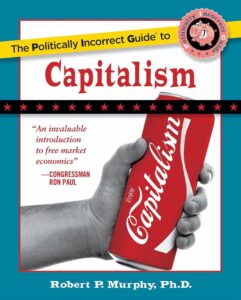
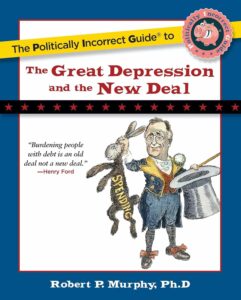
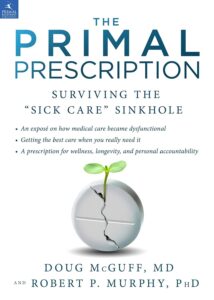

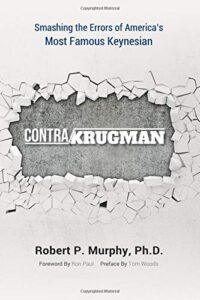
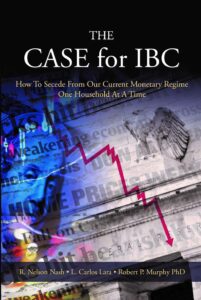
Recent Comments